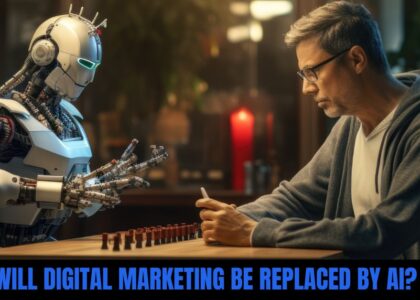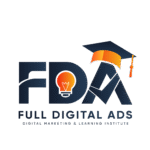In today’s fast-paced digital world, if your business isn’t online, does it even exist? That might sound harsh, but it’s the reality of the 21st century. Digital marketing is no longer optional—it’s survival. But with so many methods and platforms, where do you even begin? Let’s simplify it for you by breaking down the four main types of digital marketing that power the internet.
Introduction to Digital Marketing
What Is Digital Marketing?
Digital marketing refers to promoting products or services using digital channels such as search engines, social media, email, and websites. It’s about meeting your customers where they are—online.
Brief history and evolution
Digital marketing has evolved from simple email campaigns in the ’90s to complex, multi-channel strategies today. What began with banner ads has grown into a powerhouse of AI-driven tools, influencers, SEO tactics, and hyper-targeted ads.
Why digital marketing is essential today
Because that’s where your customers are. Whether you’re a bakery in Brooklyn or a tech startup in Bangalore, your audience lives on Google, scrolls Instagram, and watches YouTube.
Importance of Knowing the 4 Types
Understanding the core types of digital marketing helps you allocate your time, budget, and efforts wisely. It’s like building a house—you need to know what tools to use.
The 4 Types of Digital Marketing
1. Search Engine Optimization (SEO)
What is SEO?
SEO is all about getting your website to show up on Google when people search for something. It’s free (sort of), but it requires effort, patience, and consistency.
On-page vs Off-page SEO
- On-page SEO includes optimizing your website’s content, meta tags, images, and structure.
- Off-page SEO is about building your website’s reputation through backlinks, social signals, and domain authority.
Why SEO matters for long-term growth
Think of SEO as planting a tree. It won’t give you fruit tomorrow, but in time, it will bear results that keep coming—without constant spending.
2. Pay-Per-Click Advertising (PPC)
What is PPC?
PPC is when you pay to get in front of your audience. You’re basically buying visits to your website. Google Ads is the most common PPC platform.
Google Ads & other platforms
While Google dominates, don’t ignore Bing, Facebook Ads, Instagram Ads, and even LinkedIn. Each platform has unique strengths and audience types.
Pros and cons of PPC
- Pros: Fast results, measurable ROI, targeted reach.
- Cons: Can be expensive, stops working once you stop paying.
3. Content Marketing
What is content marketing?
This is about creating valuable content (articles, videos, guides) that educates or entertains your audience, subtly promoting your brand.
Blogging, videos, and infographics
- Blogs drive SEO.
- Videos engage and convert.
- Infographics simplify complex data visually.
Content is king—but why?
Because trust sells. When people trust your content, they trust your brand—and that’s what leads to conversions.
4. Social Media Marketing (SMM)
What is social media marketing?
It’s using platforms like Facebook, Instagram, Twitter, and LinkedIn to connect with your audience and promote your brand.
Organic vs paid social reach
- Organic: Free posts, stories, and interactions.
- Paid: Sponsored ads, boosted posts, influencer partnerships.
Choosing the right platform
Go where your audience hangs out. B2B? Try LinkedIn. Gen Z? You need TikTok. Millennials? Instagram and Facebook still rule.
Combining These Four Types
Why integration is powerful
When SEO brings traffic, PPC accelerates it, content builds trust, and social media nurtures relationships—you’ve got a winning combo. Each type supports and amplifies the others.
Real-world success examples
Think of brands like Nike or Zomato. They use every platform—search engines, social, blogs, and ads—to stay top-of-mind. That’s not luck—it’s strategy.
Trends to Watch in Digital Marketing
AI and Automation
AI is transforming digital marketing. Tools like ChatGPT, automated email responders, and chatbots are helping marketers scale and personalize their work.
Video and Interactive Content
Videos, reels, and even interactive quizzes or calculators increase engagement. People love to interact, not just scroll.
Voice Search Optimization
With Alexa and Siri in every home, optimizing for voice queries is becoming essential. Think: “best pizza near me” kind of searches.
Conclusion
Digital marketing isn’t just one thing—it’s an ecosystem. By understanding the four main types—SEO, PPC, content marketing, and social media marketing—you build a strong, sustainable digital presence. Whether you’re a newbie or a seasoned pro, mastering these core pillars is your ticket to online success.
FAQs
What type of digital marketing is best for small businesses?
Content marketing and SEO are budget-friendly and yield long-term benefits.
How do I start learning digital marketing?
Enroll in online courses, follow experts, and most importantly—practice what you learn.
Is SEO better than PPC?
It depends. SEO is for long-term growth; PPC delivers instant traffic but can get costly.
How long does it take to see results from digital marketing?
SEO takes 3–6 months, PPC is instant, and content builds over time. Patience + consistency = results.
Can one person handle all four types of digital marketing?
Yes, but it’s challenging. Most successful campaigns are team efforts with specialists for each type.




